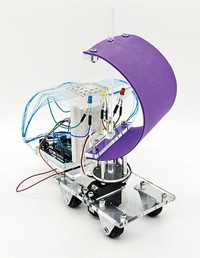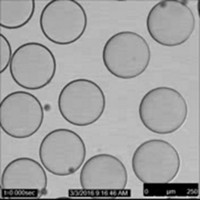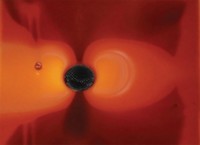Advertisement
Grab your lab coat. Let's get started
Welcome!
Welcome!
Create an account below to get 6 C&EN articles per month, receive newsletters and more - all free.
It seems this is your first time logging in online. Please enter the following information to continue.
As an ACS member you automatically get access to this site. All we need is few more details to create your reading experience.
Not you? Sign in with a different account.
Not you? Sign in with a different account.
ERROR 1
ERROR 1
ERROR 2
ERROR 2
ERROR 2
ERROR 2
ERROR 2
Password and Confirm password must match.
If you have an ACS member number, please enter it here so we can link this account to your membership. (optional)
ERROR 2
ACS values your privacy. By submitting your information, you are gaining access to C&EN and subscribing to our weekly newsletter. We use the information you provide to make your reading experience better, and we will never sell your data to third party members.
3-D Printing
Spiky surfaces steer different fluids in opposite directions
Simple, pump-free transport of liquids could be used in microfluidics, electronics cooling, and mixture separations
by Prachi Patel, special to C&EN
September 24, 2021
| A version of this story appeared in
Volume 99, Issue 35

A new surface carved with neatly arranged rows of angled teeth steers different liquids in different directions without the need for pumps (Science 2021, DOI: 10.1126/science.abg7552). The 3D surface can propel liquids at high speed. This simple way to maneuver liquids without using energy could be important for microfluidic lab-on-a-chip systems and for wicking heat-transfer liquids inside the miniature pipes used to cool electronics. To transport fluids without pumping, researchers typically rely on surfaces with slowly changing curvature or varying abilities to repel liquids. But with such designs, all liquids move in the same direction, says Zuankai Wang, a mechanical engineer at the City University of Hong Kong. He and his colleagues wanted to make a system that directs liquids in different directions according to their intrinsic properties and not those of the surface. Their inspiration was the Araucaria plant, which sports periodically arranged pointed, curved leaves. Liquids with different surface tensions move in opposite directions along these leaves. The team used 3D printing to make rows of ratchet-like arrays on a polymer surface. Liquids with high surface tension, like water, moved against the tilting direction of the teeth, while low-surface-tension fluids, like ethanol, moved in the opposite direction. The researchers also demonstrated that this selective liquid steering can be used to separate water-oil mixtures. When they put a 1:1 water-oil mixture on the surface, the fluids moved in opposite directions, separating completely in seconds.





Join the conversation
Contact the reporter
Submit a Letter to the Editor for publication
Engage with us on Twitter